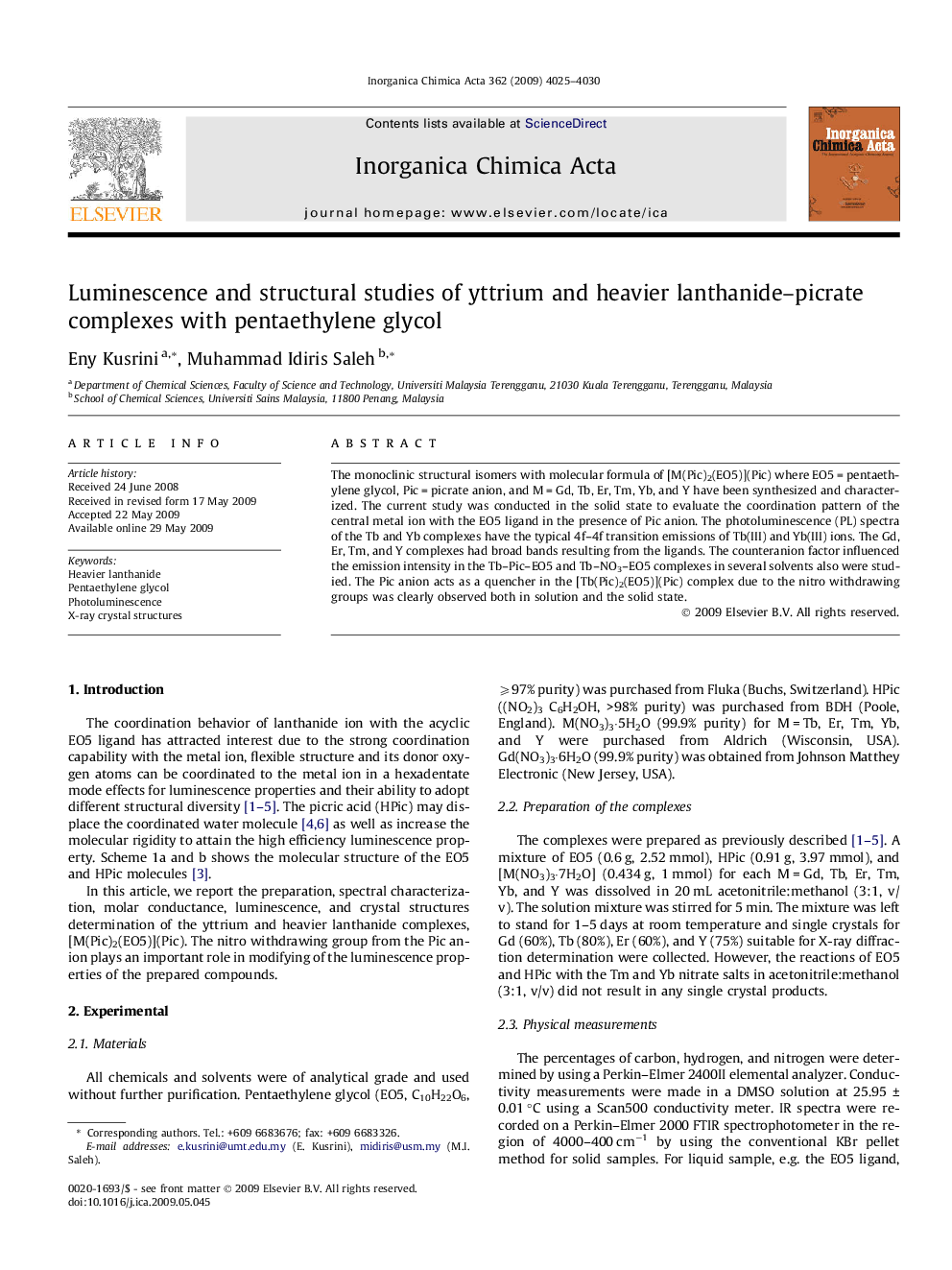| Article ID | Journal | Published Year | Pages | File Type |
|---|---|---|---|---|
| 1308307 | Inorganica Chimica Acta | 2009 | 6 Pages |
The monoclinic structural isomers with molecular formula of [M(Pic)2(EO5)](Pic) where EO5 = pentaethylene glycol, Pic = picrate anion, and M = Gd, Tb, Er, Tm, Yb, and Y have been synthesized and characterized. The current study was conducted in the solid state to evaluate the coordination pattern of the central metal ion with the EO5 ligand in the presence of Pic anion. The photoluminescence (PL) spectra of the Tb and Yb complexes have the typical 4f–4f transition emissions of Tb(III) and Yb(III) ions. The Gd, Er, Tm, and Y complexes had broad bands resulting from the ligands. The counteranion factor influenced the emission intensity in the Tb–Pic–EO5 and Tb–NO3–EO5 complexes in several solvents also were studied. The Pic anion acts as a quencher in the [Tb(Pic)2(EO5)](Pic) complex due to the nitro withdrawing groups was clearly observed both in solution and the solid state.
Graphical abstractStructural isomerism of the yttrium and heavier lanthanide complexes, [M(Pic)2(EO5)](Pic) {M = Gd, Tb, Er, and Y}, were crystallized in monoclinic with space group P21/c. The formation of a pseudo-cyclic conformation makes it easier for the EO5 ligand to wrap around the central metal ion. The steric, electronic, conformational, and the nitro withdrawing group from the Pic ligand plays an important role in modifying of the luminescence properties of the complexes. The Pic anion acts as a quencher in the Tb complex due to the nitro withdrawing groups was clearly observed both in solution and the solid state. The Tb complex is not suitable for organic light emitting diode devices because of its ionic character and low volatility.Figure optionsDownload full-size imageDownload as PowerPoint slide
